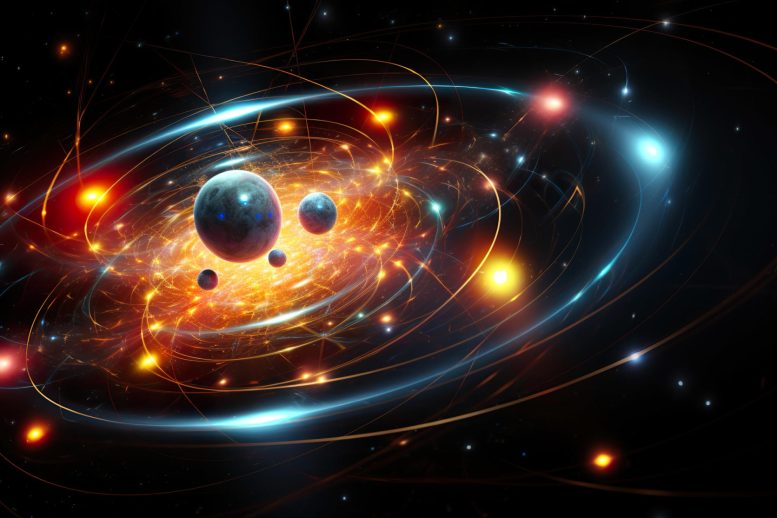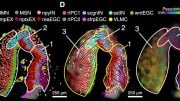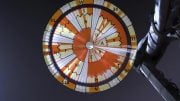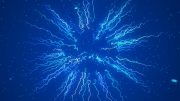
Mid-20th-century physics discovered proton resonance, but understanding of the resonating proton’s 3D structure remains limited. Recent experiments at the Jefferson Lab have explored these structures, providing insights into the early universe and fundamental particles like nucleons, which comprise quarks and gluons.
New research sheds light on the 3D structure of nucleon resonances.
During the mid-20th century, scientists discovered that protons have the ability to resonate, akin to the vibrations of a bell. Over the subsequent thirty years, advancements have led to 3D pictures of the proton and significant insight into its structure in its ground state. However, there remains limited knowledge about the 3D structure of a resonating proton.
A recent experiment conducted at the U.S. Department of Energy’s Thomas Jefferson National Accelerator Facility has delved deeper into the three-dimensional structures of both proton and neutron resonances. This research provides one more puzzle piece to the vast picture of the chaotic, nascent universe that existed just after the Big Bang.
Studying the fundamental properties and behaviors of nucleons offers critical insights into the basic building blocks of matter. Nucleons are the protons and neutrons that make up the nuclei of atoms. Each nucleon consists of three quarks tightly bound together by gluons by the strong interaction — the strongest force in nature.
The most stable, lowest-energy state of a nucleon is called its ground state. But when a nucleon is forcibly excited into a higher-energy state, its quarks rotate and vibrate against each other, exhibiting what’s known as a nucleon resonance.
A group of physicists from Justus Liebig Universitat (JLU) Giessen in Germany and the University of Connecticut led the CLAS Collaboration effort to conduct an experiment exploring these nucleon resonances. The experiment was carried out at Jefferson Lab’s world-class Continuous Electron Beam Accelerator Facility (CEBAF). CEBAF is a DOE Office of Science user facility that supports the research of more than 1,800 nuclear physicists worldwide. The results of the research were recently published in the prestigious peer-reviewed journal Physical Review Letters.
Analysis leader Stefan Diehl said the team’s work sheds light on the basic properties of nucleon resonances. Diehl, is a postdoctoral researcher and project leader at the 2nd Physics Institute at JLU Giessen and a research professor at the University of Connecticut. He said the work is also inspiring fresh investigations of the 3D structure of the resonating proton and the excitation process.
“This is the first time we have some measurement, some observation, which is sensitive to the 3D characteristics of such an excited state,” said Diehl. “In principle, this is just the beginning, and this measurement is opening a new field of research.”
The mystery of how matter formed
The experiment was conducted in Experimental Hall B in 2018-2019 using Jefferson Lab’s CLAS12 detector. A high-energy electron beam was sent into a chamber of cooled hydrogen gas. The electrons impacted the target’s protons to excite the quarks within and produce nucleon resonance in combination with a quark-antiquark state — a so-called meson.
The excitations are fleeting, but they leave behind evidence of their existence in the form of new particles that are made from the excited particles’ energy as it fritters away. These new particles live long enough for the detector to pick them up, so the team could reconstruct the resonance.
Diehl and others recently discussed their results as part of a joint workshop “Exploring resonance structure with transition GPDs” in Trento, Italy. The research has already inspired two theory groups to publish papers on the work.
The team also plans more experiments at Jefferson Lab using different targets and polarizations. By scattering electrons from polarized protons, they can access different characteristics of the scattering process. In addition, the study of similar processes, such as the production of a resonance in combination with an energetic photon, can provide further important information.
Through such experiments, Diehl said, physicists can tease out the properties of the early cosmos after the Big Bang.
“In the beginning, the early cosmos only had some plasma consisting of quarks and gluons, which were all spinning around because the energy was so high,” said Diehl. “Then, at some point, matter started to form, and the first things that formed were the excited nucleon states. When the universe expanded further, it cooled down and the ground state nucleons manifested.
“With these studies, we can learn about the characteristics of these resonances. And this will tell us things about how matter was formed in the universe and why the universe exists in its present form.”
Reference: “First Measurement of Hard Exclusive π−Δ++Electroproduction Beam-Spin Asymmetries off the Proton” by S. Diehl et al. (CLAS Collaboration), 11 July 2023, Physical Review Letters.
DOI: 10.1103/PhysRevLett.131.021901
Born in Lich, Germany, Diehl pursued physics as a means to understand the phenomena of nature and the nature of the world. He earned bachelor’s, master’s, and doctoral degrees at JLU Giessen. He is a member of the CLAS, PANDA, ePIC, and COMPASS collaborations and has co-authored more than 70 peer-reviewed publications.
The study was funded by the US Department of Energy.









Be the first to comment on "Unraveling the Secrets of the Early Universe – Ringing Protons Provide New Insight"